——— K ———
K – (1) The abbreviation for kick drum. (2) The symbol for kelvin. (3) The abbreviation for kilo-, meaning 210 or 1024 (upper-case k) in digital systems.
k – the abbreviation for kilo-, meaning 1000 in metric systems (lower-case k).
K2HD (K2 High Definition) – a high-end CD mastering technique developed by JVC that uses 24-bit resolution and a 100-kHz sampling rate for all mastering steps up to the final conversion to a 16-bit, 44.1-kHz CD pressing. This process is supposed to provide the listener with the best possible 16-bit CD recording without requiring a special player.
K47 capsule – the capsule developed by Neumann to replace the M7 capsule originally used in the Neumann U 47 microphone, introduced in 1947. The M7 capsule had the brass backplate covered with a thin metallized PVC diaphragm. Because the PVC suffered from early deterioration, Neumann replaced it in 1958 with a new capsule designated as the K47, which used a metallized polyester diaphragm. The K47 capsule shared a single backplate, which meant that both diaphragms had to tuned identically to produce balanced figure-8 or omni patterns. See also K67 capsule.
K67 capsule – the capsule developed by Neumann for use in the Neumann U 67 microphone, introduced in 1960. The K67 capsule was designed as an improvement to the K47 capsule. The K67 has a two-piece backplate, allowing the metallized polyester diaphragms to be tuned individually so they can be matched for equivalent response. The K67 capsule has become the most common and most copied condenser capsule in the world.
karaoke – (1) A form of interactive music entertainment in which an amateur performer sings popular songs to a prerecorded accompaniment, normally with the lyrics provided on a video screen. (2) The performance of such music. From the Japanese kara “empty” and okesutora “orchestra.”
kathodophone – a type of microphone with no moving parts that detects sound waves by measuring the change in density in ionized air between an anode and a cathode. First used to add sound to film in 1918, it never became commercially successful because dust particles were also detected, which created noise. Also spelled kathodophon, katodophon, and katodophone.
kb – see kilobit.
Kb – see Kilobit.
kB – see kilobyte.
KB – see Kilobyte.
KC – an old abbreviation for the frequency unit kilocycles per second, which has been replaced by kilohertz (kHz).
kelvin (K) – (1) A temperature scale based on the Celsius scale in which absolute zero is defined as 0, which is -273.15° Celsisus. It is abbreviated as K and named for the British physicist William Thomson (known as Lord Kelvin). (2) One degree on the kelvin temperature scale. Unlike Celsius, it is not capitalized and does not use degrees. For example, you would say that water freezes at 273.15 kelvins, not 273.15 degrees kelvin.
Kerr effect – the change in phase or polarity of electromagnetic radiation (specifically light) in response to a magnetic field. This effect is what makes magneto-optical discs work. Also called the quadratic electro-optic (QEO) effect.
kettle drums – see timpani.
Kevlar® – the trademark of Dupont for a polymeric material that among other things is used in loudspeaker cones because of its high strength-to-weight ratio.
key – (1) Any of 12 major or 12 minor scales on which a musical composition is based that provide its tonal framework. The key of a piece of music is indicated by its key signature. (2) A button or lever that sends a signal or performs an action, such as the keys on a keyboard. (3) The control of a dynamic processing device by an external audio signal (key input). Also called a side chain. (4) To control a dynamic processor with an external signal as in definition #3.

keyboard – (1) The keys used to input data or send signals to a computer. (2) The white and black keys on a piano that when depressed cause a hammer to strike strings. (3) A device with keys resembling those on a piano used to play an instrument or input data on a MIDI device. (4) An instrument with a piano-like keyboard that when played emulates the sound of a piano, organ, and many other instruments and sounds. Also called an electronic keyboard.
keyboard amp – short for keyboard amplifier.
keyboard amplifier – an amplifier specifically designed for use with keyboards. While guitar amplifiers have a limited frequency range, typically use only mid-range drivers, and are easily driven into distortion (for effect), a keyboard amplifier will have a clean, wide frequency response using a low-frequency driver, midrange driver, and high-frequency driver. They may include effects loops, multiple inputs, and other onboard effects. Usually they are combo amps. Called a keyboard amp for short.
keyboard controller – a keyboard instrument that sends MIDI data, but creates no sounds itself.
keyboard expression – the ability of a keyboard instrument to express the dynamics of the music by the way the performer depresses the keys on the keyboard. Keyboard expression includes velocity, aftertouch, and displacement sensitivity. Often called expression for short.
keyboardist – a musician who plays a keyboard, especially an electronic keyboard. Although technically someone who plays a piano or organ is a keyboardist, they are usually called a pianist or organist respectively.
keyboard player – see keyboardist.
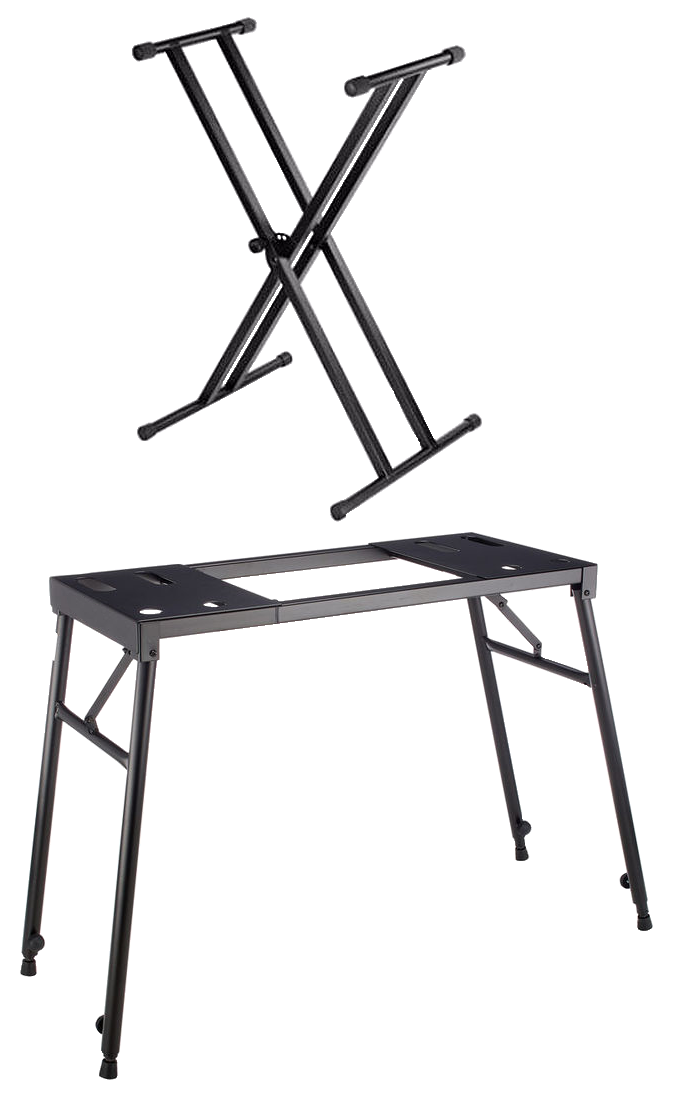
Keyboard Stands
keyboard shortcut – a combination of computer keys that are pressed simultaneously to perform a task that ordinarily requires using a mouse (or other input device) to click a button or menu item in a DAW or other software. Keyboard shortcuts consist of a modifier key plus a numeric key, alphabetic key, or mouse click and usually speed up workflow. Also called a
key command or key equivalent.
keyboard stand – a device designed to support a keyboard while it is being played.
keyboard workstation – a combination of several MIDI components in one unit, such as keyboard, sequencer, sample player, and effects processor.
key change – see modulation, definition #2.
key command – see keyboard shortcut.
key drive – see USB flash drive.
key equivalent – see keyboard shortcut.
keygroup – a group of up to four samples of a musical instrument. Several keygoups are used to map out a collection of samples across the whole range of a keyboard. Also called a multisample or keymap. See keygrouping.
keygrouping – the process of sampling a musical instrument at multiple pitches. Several samples of this type make up a keygroup. When an instrument is sampled at a single pitch, and reproduced at another pitch an octave or more away, it often sounds altered or inaccurate. Keygrouping corrects this problem by taking multiple samples over the complete range of an instrument so that each sample is close to the pitch being reproduced. Also known as keymapping or multisampling.
key input – the signal that controls a dynamics processor by an external audio signal when using side chaining.
keying – see side chaining.
key map – (1) A file that contains defined mappings between MIDI notes and sounds or sound patches. Key maps can often be saved and reloaded to be used again. (2) See keygroup.
keymapping – see keygrouping.
keynote – the first note of a diatonic scale. Also called the tonic.
keynote number – the number assigned to each key of a keyboard controller or synthesizer that is sent in a MIDI signal.
keys – a slang term referring to a keyboard instrument.
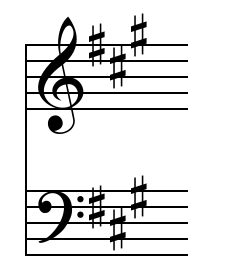
(A Major)
key signature – the flat (♭) and sharp (♯) symbols placed at the beginning of a musical staff to indicate the key of a song in sheet music.
kibi- – one of the new binary prefixes approved by the IEC and used to distinguish between binary and decimal prefixes, i.e. kibi represents 1024 = 210 versus kilo which represents 1000 = 103. For example, you would use 24 kibibits, abbreviated 24 Kib, or 24 kilobits, abbreviated 24 Kb.
kick – short for kick drum.
kick drum – a large, two-headed drum that has a low booming sound. Also called a bass drum and kick for short or a foot drum or foot for short. Sometimes abbreviated as K or kik.
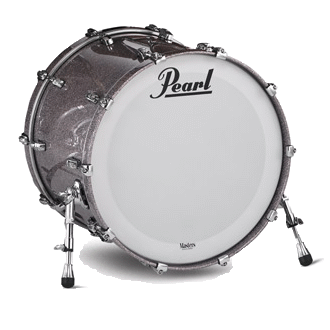
kick drum tunnel – a technique popular in the 1980s that used a tunnel made of carpet, cardboard, or a sound blanket rolled into a semi-circle and placed around the kick drum. A kick drum captured by a microphone placed at the end of the tunnel has more room sound with less bleed from the other drums.
kik – abbreviation for kick drum.
kilo- (k) – the metric prefix for a factor of 1000. It uses the lower-case k, while upper-case K is used to mean 1024 = 210, although this convention is not always strictly adhered to. See also kibi-.
kilobit (kb) – one thousand bits.
Kilobit (Kb) – a term in popular use for 1024 bits, but the correct term should be kibibit.
kilobyte (kB) – one thousand bytes.
Kilobyte (KB) – a term in popular use for 1024 bytes, but the correct term should be kibibyte.
kilocycles per second – one thousand cycles per second, an old unit for frequency, which has been replaced by kilohertz (kHz).
kilogram (kg) – (1) A unit of mass in the SI system equal to 1000 grams, equal to the mass of the international prototype of the kilogram, a platinum-iridium cylinder kept in Sèvres, France, or approximately 2.205 lb. (2) A unit of force and weight, equal to the force that produces an acceleration of 9.80665 meters per second per second when acting on a mass of one kilogram.
kilohertz (kHz) – 1,000 hertz (Hz).
kilopascal (kPa) – 1,000 pascal (Pa).
kilowatt (kW) – 1,000 watts (W).
kilowatt-hour (kWh) – 1,000 watt-hours (Wh).
kit – (1) Short for drum kit. (2) British slang for gear.
kinescope – (1) A recording of a television program using a 16-mm or 35-mm movie film with a camera mounted in front of a video monitor and synchronized to the scanning rate of the monitor. The procedure was begun in the 1940s for the preservation and re-broadcasting of TV programs before commercial broadcast-quality videotape became available in 1956. Originally Kinescope was a trademark of RCA for its cathode ray tube (CRT) used in television receivers, but it released the term to the public domain in 1950. At first they were known as kinescope films or kinescope recordings. Also known as telerecording in the UK. Called a kine for short. (2) The equipment used to make kinescope recordings. (3) A film made using a kinescope.
Klipsch Audio Technologies – an American company headquartered in Indianapolis, Indiana, that produces produces loudspeakers, drivers, and enclosures for consumers, as well as for public address systems and personal computers. It was founded in 1946 by Paul W. Klipsch in Hope, Arkansas, as Klipsch and Associates.
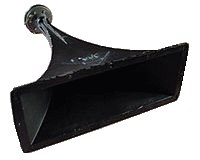
Klipschorn® – a loudspeaker designed and patented by Paul W. Klipsch in 1946, consisting of a folded horn within the speaker cabinet that can achieve low-distortion tones down to 30 Hz. It has been in continuous production in the Klipsch plant in Hope, Arkansas, since 1946—the longest run of continuous speaker production in history.
K-metering – a method of metering audio levels using both peak meters and average meters. Peak meters are useful for detecting clipping but not for indicating the loudness of a track. On the other hand, VU meters and RMS meters measure average signal strength which is a better indicator of loudness. A K-Meter can be used in RMS mode or the ITU loudness mode (ITU BS.1770), which uses K-weighting which more closely follows the sensitivity of the human ear to different frequencies. See also A-weighting, B-weighting, C-weighting, D-weighting, and Z-weighting.
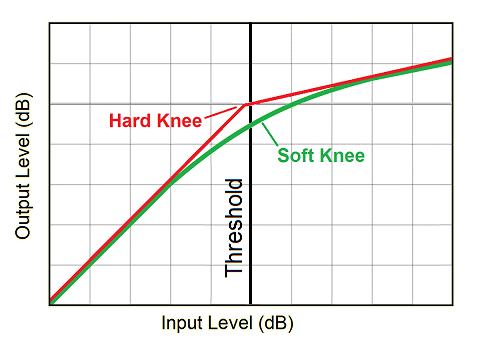
knee – the point at which a response or function makes a change. The term is used in particular with a compressor where the threshold setting determines the point at which compression begins. The term soft knee is used when the change is smoothed out, while a hard knee indicates a sudden change.
Korg, Inc. – a company founded in 1962 as Keio Electronic Laboratories, headquartered in Inagi, Tokyo, Japan. It manufactures electronic musical instruments, audio processors, guitar pedal, recording equipment, and electronic tuners. In 1992, it acquired Vox, which manufacture electric guitars and guitar amplifiers.
KSHRFOO – the abbreviation for the traditional order of microphone inputs on a mixer or console for a drum kit. They stand for Kick, Snare, Hi-hat, Rack tom, Floor tom, Overhead left, and Overhead right.
K-taper – see taper.
kunstkopf technique – German for artificial head. See sphere microphone technique.
KVM extender – see KVM switch.
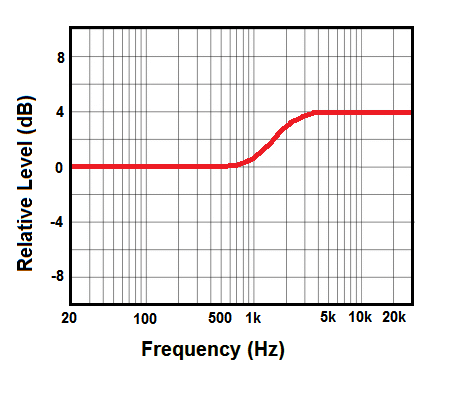
KVM switch – Keyboard Video Mouse switch. A device used to connect a keyboard, video monitor, and mouse to two or more computers. KVM switches are used to control several computers while saving desktop space or to control a computer at some distance, such as when you need to isolate a noisy computer from a recording studio environment. Also called a KVM extender.
K-weighting – a equalization curve based on the sensitivity of the human ear to sounds at various frequencies. It forms the basis of standard ITU BS.1770 and is used to control loudness in the broadcast industry. See also A-weighting, B-weighting, C-weighting, D-weighting, and Z-weighting.
Note: We believe this is the largest dictionary (glossary) of terms specific to usage within the recording industry that is currently available on the internet, with more than 8,800 entries, nearly 800 illustrations, and dozens of tables. Some of the terms have different or additional meanings in other situations, especially within the electronic, automotive, scientific, and computer industries. Of necessity there are obvious overlaps into other fields such as music, electronics, and computers, but such excursions are limited to information deemed pertinent to the knowledge required to operate and/or participate effectively in the workings of a recording studio. Also included are terms related to sound reinforcement (live performances) including wireless microphone technology because a working knowledge of that terminology is necessary for recording at live performance venues. Because recording studios also record audio for video and motion pictures (films), some terminology from those fields is included. Some scientific terms are included because they help explain studio terminology. For example, electromagnetism explains how microphones, loudspeakers, and guitar pickups work. Knowledge of radio waves and the radio frequency spectrum is needed to explain wireless devices. Any trademarks or trade names mentioned belong to their respective owners. The information contained in this dictionary is believed to be accurate at the time of publication. This information is subject to change without notice. The information was obtained from and cross-checked with a variety of sources that are believed to be reliable. However, Los Senderos Studio, LLC does not guarantee the accuracy or completeness of the information contained herein. Please contact us to report any errors, omissions, discrepancies, or broken links. Los Senderos Studio shall not be responsible for any consequences or damages arising out of the use of this information. Nothing in this glossary should be interpreted as legal advice. For a glossary providing information on legal and business matters for musicians, we suggest you consult Musicians Business Dictionary.
A note on alphabetical order: The terms in this glossary are alphabetical without regard to spaces and punctuation. For example, AM Radio follows amplitude. While this may seem to be at odds with other conventions, it eliminates confusion with words such as pickup, which is sometimes written as pick up or pick-up. In addition, all symbols such as &, -, or / are ignored. The entries on the number page (0-9) are listed in increasing value within each digit. For example, all of the entries beginning with 1 are listed before those starting with 2. For Greek letters (α-ω), the entries are in Greek alphabetical order.


